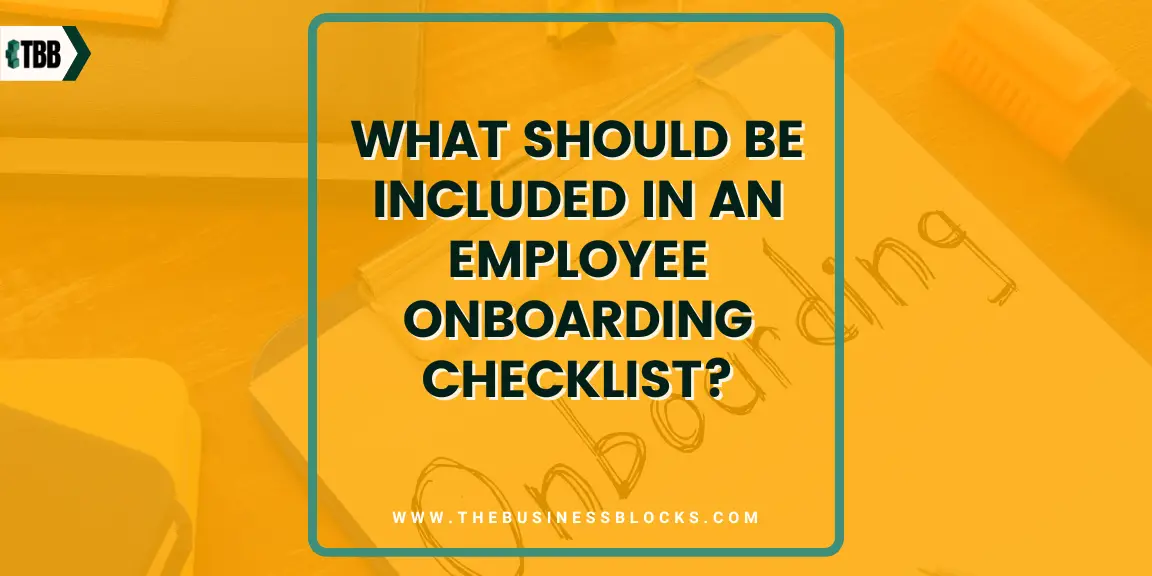The onboarding process for new employees is essential to setting them up for success and ensuring they have the tools, knowledge, and resources needed to perform at their best. A well-structured checklist guides key onboarding elements and helps ensure that no important steps are missed.
Are you Looking for the Best Practices for Onboard New Employees?
The employee onboarding process is an important part of fostering a good work environment. Having a checklist will ensure your new hires have everything they need to get off to a great start. A thorough checklist ensures that all tasks related to the new hire’s position are addressed and completed according to company standards.
From setting up their workstation and providing access rights to training them on safety protocols, multiple steps should be considered during onboarding. Our comprehensive new hire checklist template gives you all the ingredients to integrate any new team member into your business!
What is Onboarding?

Employee onboarding is when new hires are integrated into an organization and provided with the necessary information, tools, and resources to become productive and successful onboarding process in their new role. Onboarding typically involves orientation, training programs, and introductions to key stakeholders and the company’s culture.
Effective onboarding is critical to the success of both the new hire and the organization as a whole. Research shows that a well-designed onboarding program can increase employee engagement, retention, and performance. It also helps new hires feel valued, supported, and connected to their team and the company, which can lead to greater job satisfaction and loyalty.
What is an Onboarding Checklist?
An onboarding checklist is a list of tasks and activities that must be completed before the beginning of employment, during the first few days or weeks on the job, or at periodic intervals throughout the employee’s tenure.
This helps the employer ensure that all new hires receive a consistent and comprehensive experience when coming on board and minimize the chance of errors or oversights in the onboarding process. Maintaining communication channels throughout onboarding is essential to ensure new employees get off to a good start.
Finally, having an onboarding checklist helps ensure that nothing is missed in the process and keeps track of which onboarding elements have been completed. This gives both the employee and the employer a clear sense of progress.
So, What Should Be Included In An Employee Onboarding Checklist?

Employee onboarding is an essential process that helps new hires adjust to their new roles and feel comfortable in the workplace. It’s a critical step that sets the tone for the employee’s experience with the company and can help retain top talent. To ensure a smooth and effective onboarding experience.
An ideal onboarding checklist should include:
- A welcome message from HR or the manager
- An introduction to key staff and colleagues
- Company mission, vision, values, policies & procedures
- Access to tools and technology needed for the job
- Training and orientation on safety protocols
- An overview of job responsibilities
- A tour of the office and facilities
- Payment and benefit information
- Network access setup
- Team building activities or icebreakers
A comprehensive employee onboarding checklist is essential for effectively integrating new hires into the organization. This checklist should include pre-boarding tasks, orientation and training, culture and values, communication and feedback, and integration and socialization to ensure that each new hire has a positive first experience with their organization.
Why Having an Employee Onboarding Checklist Is Important
When new hire begins their role, many tasks need to be completed. An organized and comprehensive onboarding checklist can help keep everything in order, ensuring nothing is forgotten or left undone. Here are some of the benefits of having a new hire checklist in place:
- Ensures New Hires Understand Company Policies & Procedures: A well-crafted onboarding checklist, like the employee handbook, provides a clear and consistent overview of company policies and procedures. This helps ensure that new hires understand the rules they must abide by and their rights within the organization.
- Establishes Goals & Expectations: A new employee onboarding checklist can help set clear expectations for the new hire and the company. This helps ensure everyone is on the same page from day one and avoids misunderstandings or confusion later.
- Enhances First Impressions: A good onboarding checklist ensures that all essential tasks are completed promptly, creating a positive first impression of your organization and helping new hires feel welcomed and valued.
- Streamlines the Onboarding Process: An onboarding checklist ensures that all tasks are completed logically, without missing or forgetting any steps. This makes the process smoother and simpler for the new hire and the organization.
- Saves Time & Resources: By having an onboarding checklist, companies can ensure they make the most efficient use of their time and resources. This helps to minimize any delays or interruptions during the onboarding process.
Employee onboarding template is an important part of any business’s success. Having a comprehensive employee onboarding checklist in place ensures that all essential tasks are completed in a timely and efficient, helping to set new hires up for success.
4 Tips for Developing and Implementing an Onboarding Checklist

Creating an effective onboarding checklist requires input from multiple stakeholders, including HR, managers, and current employees. To create a checklist that is tailored to your organization’s unique needs and culture, consider the following tips:
- Customize the Checklist: Every company is different, so it’s important to customize the onboarding checklist to fit your organization’s unique needs and culture. For example, if your company values innovation and creativity, you may want to include activities encouraging new employees to share their ideas and contribute to the company’s success.
- Using Technology to Streamline the Onboarding Process Can Save Time and Improve Efficiency: Consider using electronic forms and online training modules to reduce paperwork and ensure new employees can access all the necessary information.
- Assign a Dedicated Onboarding Coordinator or Mentor: A dedicated onboarding coordinator or mentor can help new employees feel supported and guided through the process. This person can help answer questions, provide feedback, and ensure that new hires have everything they need to succeed in their new role.
- Implement Best Practices: To ensure the success of your onboarding checklist, it’s important to implement best practices. This might include setting clear goals and timelines, providing regular feedback and check-ins, and soliciting feedback from new hires to improve the process.
Following these tips can help ensure your onboarding checklist is effective and successful. Implementing a comprehensive onboarding checklist can help new employees with the information, resources, and support they need to feel welcome, comfortable, and confident in their roles.
What are the Common Onboarding Mistakes to Avoid?

While an effective onboarding checklist can have many benefits, there are also common mistakes that organizations should avoid. Some of these mistakes include the following:
Rushing the Process
Onboarding is a critical part of the employee experience, so taking the time to do it right is important. Rushing the process can lead to mistakes, missed opportunities, and unhappy employees.
Neglecting to Customize the Process
Every company is different, so it’s important to customize the onboarding process to fit your organization’s unique needs and culture. Neglecting to do so can lead to confusion, disengagement, and high turnover.
Failing to Solicit Feedback
Onboarding is an ongoing process, and it’s important to solicit feedback from new hires to ensure it works effectively. Failing to do so can lead to missed opportunities for improvement and decreased employee engagement.
By avoiding these common onboarding mistakes, organizations can ensure that their onboarding checklist is effective and successful. Implementing an effective onboarding checklist can help new employees learn the ropes quickly and smoothly, foster a sense of belonging and integration, and set them up for organizational success.
Benefits of Having a Structured Onboarding Process

Onboarding is integrating new employees into a company and helping them acquire the necessary knowledge, skills, and behaviors to become successful and productive members of the organization. The benefits of onboarding include the following:
- Improved retention.
- Faster productivity.
- Better job performance.
- Enhanced employee engagement.
- Improved organizational reputation.
Overall, investing in a comprehensive onboarding program can help companies attract and retain top talent, increase employee productivity and engagement, and improve their reputation in the marketplace.
Frequently Asked Questions About What Should Be Included In An Employee Onboarding Checklist?
Q: How long should an employee onboarding checklist be?
A: An employee onboarding checklist should be long enough to cover all the important tasks and information new employees need but not so long that it becomes overwhelming or difficult to complete within the first few days or weeks.
Q: Who is responsible for creating an employee onboarding checklist?
A: HR departments or hiring managers are typically responsible for creating employee onboarding checklists.
Q: How often should an employee onboarding checklist be updated?
A: A new hire onboarding checklist should be reviewed and updated regularly to reflect changes in company policies, procedures, and technology.
Final Thoughts
Creating an effective employee onboarding checklist is essential for any organization. It should include the information, resources, and support needed to make new hires feel welcome, comfortable, and confident. Additionally, it should be tailored to meet the specific needs of your organization and updated regularly so that it remains up-to-date.
Finally, feedback from new hires should be sought to ensure that the onboarding process is working as intended. Following these steps will help ensure that your organization’s onboarding process is successful and sets new hires up for long-term success.






























